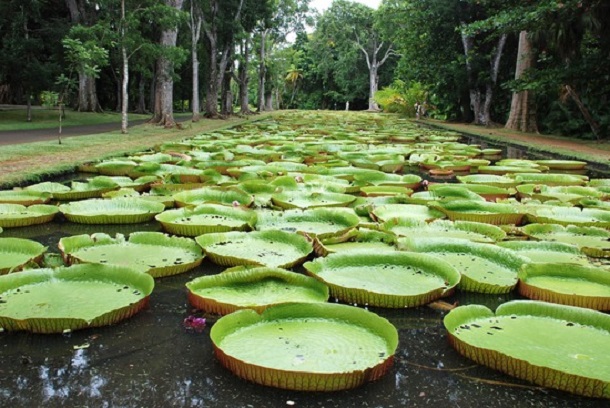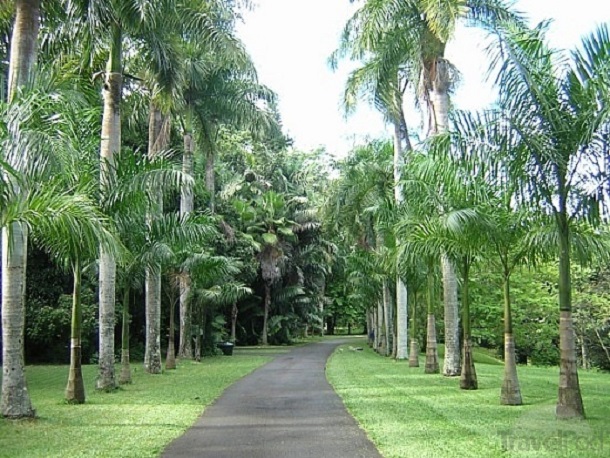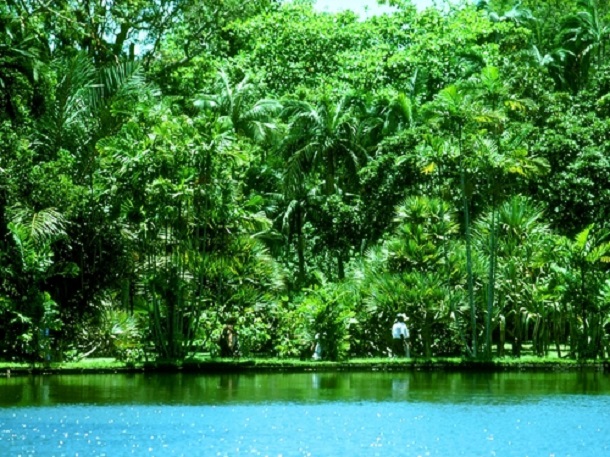The Sir Seewoosagur Ramgoolam Botanical Garden or the SSR Botanical Garden for short or better still the Pamplemousses Botanical Garden, any of the names listed is the correct name of a popular tourist attraction site in the Republic of Mauritius on the Indian Ocean.
It is one of the most popular tourist attractions in Africa and is easily reached from almost anywhere on the island and experts say after London’s Kew Gardens, the SSR Botanical Gardens is one of the best places in the world to learn about plants, trees, flowers and species of some endemic plants.
The garden is precisely located in the village of Pamplemousses, which lies about seven miles North East of the national Capital, Port Louis and experts say it covers an area approximately, 62,040 acres of land made up of various species of plants.
The history of the garden can be traced back around the 1720s when Mauritius was known as Isle de France where it was believe that the first and most famous French Governor General of the then Isle de France (Mauritius), François Mahé de Labourdonnais at that time, created a vegetable garden to provide produce for his household.
But this small beginning later turned out to be a source of fresh vegetables for the then young town of Port Louis and its surrounding villages at that time.
Later French Governors after Labourdonnais made an effort to maintain the garden and the landscape came into its own in 1768 under the auspices of the French horticulturalist Pierre Poivre.
Pierre Poivre is believed to have imported seeds from around the world in a bid to end France’s dependence on Asian spices at that time.
The gardens were neglected between 1810 and 1849 until British horticulturalist James Duncan came into contact with the garden to transform it into an arboretum for palms and other tropical trees and it continued there until Mauritius gained its independence in 1968.
Not until the 17th day of September, 1988 when the garden was officially named the Sir Seewoosagur Ramgoolam Botanic Garden in honor of the first Prime Minister and the leader of the Mauritian independence movement, a movement which fought for independence for Mauritius in 1968.
It is believe that SSR Botanical Garden is the oldest botanical garden in the Southern Hemisphere in the tropics and is currently managed by the Ministry of Agro Industry and Fisheries and administered by the Sir Seewoosagur Ramgoolam Botanic Garden Trust Board created under Act No.10 of 1999 of the Republic of Mauritian law.
The SSR Botanical Garden now serves various purposes including leisure, education, conservation and research purposes.
In the field of education, official visits by institutions both local and international have become a routine practice and the scientific staff of the Garden, upon request, also cater for students at tertiary level both for Mauritius and international students. The Resource Centre and library for the benefit of students and visitors would be in place soon as construction of the facility is far advanced and nearly completion.
For research programs, a series of research have been undertaken in the garden, especially Pest and Diseases by the Pathology and Entomology Division of the Ministry of Agro Industry and Fisheries in Mauritius, and have all provided good results for the country.
International research institutes who specialize in this area of studies can also apply to use the garden as many have been given the opportunity to carry out their research.
There are some plants which are endemic only in the garden and collection of those endemic plants has already started Creation of native woodland which is in progress to be able to boost the rich nature and adventurism of the garden.
The gardens also house the funerary platform where Sir Seewoosagur Ramgoolam was cremated and the ashes sent to India to be scattered on Ganges.
The single most famous endemic plant of the garden is its giant proud water lilies together with spices of plants including ebonies, sugar canes as well as 85 different varieties of palms ranging from Central America, Asia, Africa and the islands around the Indian Ocean.
In the centre of the garden is a pond filled with giant Victoria amazonica the water lilies, the leaves emerge as wrinkled balls and unfold into the classic tea-tray shape up to 2m across in a matter of hours. The flowers in the centre of the huge leaves open white one day and close red the next. The lilies are at their biggest and best in the warm summer months especially in January.
Palm trees also form part of the most important plants species of the garden and they come in variety of shapes and forms. Some of the more prominent are the stubby bottle palms, the tall royal palms and the talipot palms, which flower once after about 40 years and then die. Other varieties include the raffia, sugar, toddy, fever, fan and even sealing-wax palms. There are many other curious tree species on display, including the marmalade box tree, the fish poison tree and the sausage tree.
Interestingly, most of the trees that have been planted are named after famous world leaders and royal kingdoms including Princess Margaret, Countess of Snowdon, Indira Gandhi, François Mitterrand and Robert Mugabe of Zimbabwe.
Reaching Mauritius is very easy as the NationalTurk can arrange upon request to facilitate your travel either individual or in groups or institutions to taste the best of the best hospitality of Mauritius.
Issaka Adams / NationalTurk Africa Tourism News
[adrotate group=”15″]




